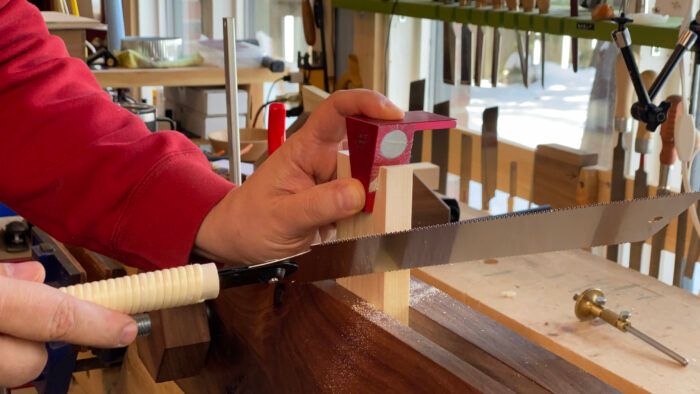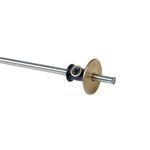The case for hand-cut dovetails
Someday, you may choose to cut dovetails using a jig and a machine. But there's real value in doing them the old-fashioned way while you are learning.
Dovetails are considered a hallmark joint in the woodworking world. People aspire to make them and feel a strong sense of accomplishment when they do. It is absolutely something to be proud of! Making dovetails feels like leveling up in woodworking. I felt this way when I first started making them, but with time and repetition I’m not as enamored with them as I once was. The dovetail for me is now one of the many joinery options I have at my disposal and use when required or desired.
When I cut dovetails now, I aim to get them done as quickly and efficiently as possible so I can move on to the rest of the build. I use a magnetic saw guide made by David Barron Tools and I’ve recently started cleaning out the pin waste with a router. I’m no Christian Becksvoort, but I can make a nice set of dovetails pretty quickly. I know how to cut dovetails completely by hand, but sometimes that isn’t the best use of my time.
That doesn’t mean that there isn’t value in cutting them by hand.
As a teacher, I see cutting dovetails by hand as more than just an exercise in joinery. It’s about learning important individual skills that come together in the end to make an attractive and highly functional joint. The individual skills are ones that you will repeat time and again no matter if you are a pro or a hobbyist.
It all starts with accurate layout. If your layout is thoughtless and rushed, you will no doubt end up with joinery that doesn’t quite fit. The key here is to slow down and work as accurately as you can. Clean layout is critical for the creation of good joinery. Once the layout is done, it’s time to pick up the saw.
There is only one way I know of to get better with a handsaw, and that is to practice (something like “In order to understand… you must do”). Sawing dovetails by hand is a great form of saw practice. It encourages you to be mindful about what you’re doing. Are you going to cut on the left or right side of the mark, or are you going to try to split the line? If you’re cutting the tails first (how else would you do it?), you don’t have to be as concerned, as the tails will become the pattern for the pins. Cut on the wrong side of the pin lines and you will have a sloppy joint that no amount of sawdust and glue can fill.
Hand-cut dovetails can also teach you about paring cuts with chisels. You learn how to manipulate a sharp chisel in ways that allow you to judiciously remove wood to improve the fit of the joint. As well, you learn to assess why the dovetail isn’t fitting well and where you have to pare away material to make it fit. Finally, you learn how a sharp plane can be your friend for leveling up the end-grain areas and those final smoothing passes that make the joint pop.
Ultimately, folks won’t know if you have toiled by hand or used some jigs or machines to make your dovetails. That being said, I feel that learning the hand technique of almost any woodworking operation teaches you a lot about what the jig or machine is doing for you. As the old saying goes, “learn to walk before you run” and you will have a better understanding of what you’re doing.
Practice, practice, practice
Skill Building Hand-Tool Exercises
The Five-Minute Dovetail
Fine Woodworking Recommended Products

Veritas Standard Wheel Marking Gauge

Starrett 4" Double Square

Freud Super Dado Saw Blade Set 8" x 5/8" Bore























Log in or create an account to post a comment.
Sign up Log in